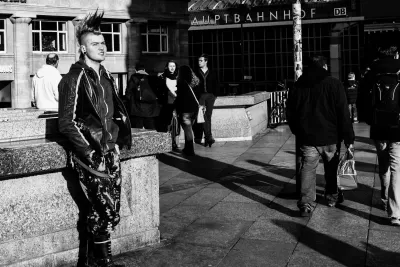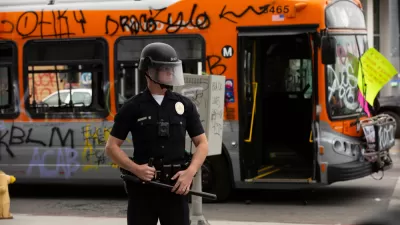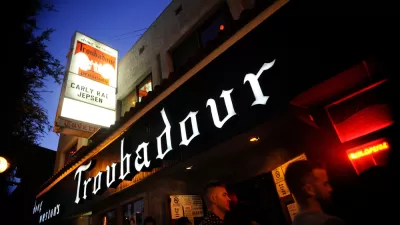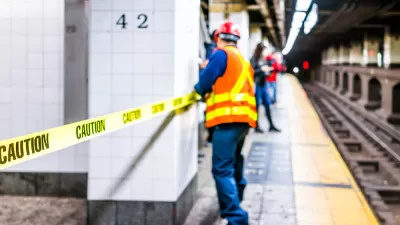From London to Los Angeles, the punk movement was always an urban phenomenon. But punks needed to fight hard for a place in the cities they called home.

Punk's not dead, but these days it may have more to fear from gentrifiers than the police. Jamie Thomson writes, "As a host of cultural historians will attest, punk never died, it just went underground. Mutating into hardcore, it retreated to the basements, the garages and the backstreet dives – but like a weed pushing through the cracks, it has fought to find its place in the hostile environment of the modern city."
As punk came up, police crackdowns weren't the only issue. "For the scene to survive, hardcore bands needed places to play – and in venues free from intervention by authority figures or age restrictions (in the US, the drinking age of 21 would exclude a good 80% of the audience)."
While London was always a punk capital, a dedicated art space took along time to coalesce. "It's somewhat surprising, then, that London has taken so long to establish its own autonomous space – and it was only due to the efforts of a small group that, in 2015, DIY Space for London was established."
These days, the punk ethos thrives online, while it's more muted on gentrifying urban streets. But it has also spread to new places like Japan and Indonesia.
FULL STORY: How punk changed cities – and vice versa

Study: Maui’s Plan to Convert Vacation Rentals to Long-Term Housing Could Cause Nearly $1 Billion Economic Loss
The plan would reduce visitor accommodation by 25,% resulting in 1,900 jobs lost.

North Texas Transit Leaders Tout Benefits of TOD for Growing Region
At a summit focused on transit-oriented development, policymakers discussed how North Texas’ expanded light rail system can serve as a tool for economic growth.

Why Should We Subsidize Public Transportation?
Many public transit agencies face financial stress due to rising costs, declining fare revenue, and declining subsidies. Transit advocates must provide a strong business case for increasing public transit funding.

How to Make US Trains Faster
Changes to boarding platforms and a switch to electric trains could improve U.S. passenger rail service without the added cost of high-speed rail.

Columbia’s Revitalized ‘Loop’ Is a Hub for Local Entrepreneurs
A focus on small businesses is helping a commercial corridor in Columbia, Missouri thrive.

Invasive Insect Threatens Minnesota’s Ash Forests
The Emerald Ash Borer is a rapidly spreading invasive pest threatening Minnesota’s ash trees, and homeowners are encouraged to plant diverse replacement species, avoid moving ash firewood, and monitor for signs of infestation.
Urban Design for Planners 1: Software Tools
This six-course series explores essential urban design concepts using open source software and equips planners with the tools they need to participate fully in the urban design process.
Planning for Universal Design
Learn the tools for implementing Universal Design in planning regulations.
City of Santa Clarita
Ascent Environmental
Institute for Housing and Urban Development Studies (IHS)
City of Grandview
Harvard GSD Executive Education
Toledo-Lucas County Plan Commissions
Salt Lake City
NYU Wagner Graduate School of Public Service





























